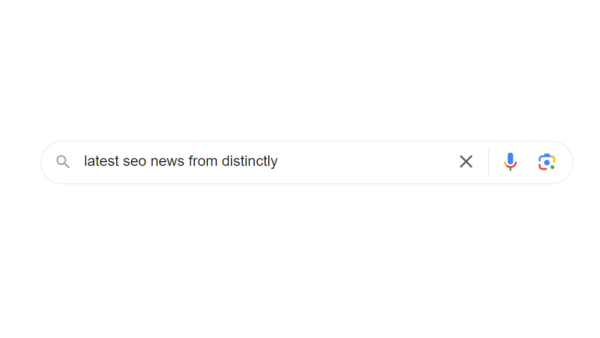Search intent and content: why it’s important for your SEO strategy
Search intent is a core part of an effective SEO strategy. To meet your customers’ needs, you have to understand exactly what they’re searching for, so you can provide the most relevant content.
What is search intent?
Search intent (also known as user intent or audience intent) is the main goal a user has when making a query. If the content you’re using to target a query doesn’t fulfil the search intent, it’s not likely to rank.
Why is it important for your SEO strategy?
Understanding search intent can help you make sure you’re targeting the content that is relevant to what your audience is searching for. The benefits of a more targeted approach include a higher chance of ranking well in search result pages (SERPs), lower bounce rate/increased engagement, and a better chance of conversions.
Types of search intent
There are four main types of search intent:
- Informational intent: users looking for answers or more information around a particular topic
- Navigational intent: users looking for a specific website or brand
- Transactional intent: users looking to make a purchase
- Commercial investigation: when users want to investigate products, brands, or services further
How to identify search intent for your keywords
There are several ways to identify the search intent behind your keywords. One way to quickly identify the intent is to categorise keywords by modifiers. For example, search queries with “buy”, “online”, “price” have high transactional intent. Queries with “best”, “vs”, “review” can be categorised as commercial investigation. “What”, “when”, “who”, “how” queries have high informational intent.
Some tools have features which automatically group keywords by intent, with one example being Semrush. However, the best and most accurate way to understand search intent is to manually check the search results for each keyword you want to target. Reviewing page types of the top-performing competitors ranking for each keyword will allow us to understand what content types are required.
For example, if the top-performing pages are blog articles, that reflects high informational intent. Whereas if the top pages ranking are product/product category pages, then that reflects strong transactional intent. Checking the SERP features for each keyword will also give a strong indication of the search intent. We’ll break down SERP features by each user intent in the following section.
Search intent and content requirements
In order to roll out an effective SEO strategy, it’s important to make sure your content is aligned with what your audience is looking for. Conducting SERP analysis can help you identify the search intent behind the keywords you want to target. We’ve broken down the recommended content types based on the search intent, as well as the key SERP features to look out for.
Informational intent
Informational searches need to be targeted with useful content that provides direct answers and explanations for users. The most common page types that are likely to rank for informational queries include blog articles or resource pages.
Common SERP features that are likely to appear for informational queries:
- knowledge panels
- featured snippets
- related questions
Examples of informational search queries:
- “how to roll sushi with mat”
- “what does spf mean”
- “why is employee engagement important”
Informational queries tend to sit at the top of the conversion funnel. While these queries don’t have a direct intention of conversion for most websites, they provide a great opportunity to target prospective customers and drive traffic. Once the user visits our informational content, we need to make sure to guide them through to the point of conversion. For e-commerce sites, this might involve adding links to relevant product pages. Whereas with B2B sites we might want users to complete a sign-up form, which would mean adding an attractive CTA that links through to the dedicated page.
Navigational intent
Branded keywords reflect strong navigational intent. Generic brand terms can be targeted with your core pages (homepage, about us, and FAQ pages).
Common SERP features that are likely to appear for navigational queries:
- site links
- knowledge cards
- top stories
Examples of navigational search queries:
- “Twitter”
- “Facebook login”
- “Distinctly SEO services”
Users who find your site through direct navigational searches will often know exactly what they’re looking for. However, it’s important to make sure your core pages have clear and concise content with attractive CTAs. If a user lands on your homepage, where do you want them to go next? Think about the user journey and make sure your website is easy for them to navigate.
It’s also important to mention that there is little to no value in targeting competitor brand keywords. It’s unlikely that Google would rank a different site, and even if it did, users have clear intentions of visiting a specific website so they’re not likely to click on your brand. There is more opportunity in targeting other search terms.
Transactional intent
Transactional queries sit at the bottom of the funnel. Searchers with transactional intent are more likely to make a purchase compared to users who enter at the top of the funnel.
Common SERP features that are likely to appear for transactional queries:
- search ads
- shopping ads
- reviews
Examples of transactional search queries:
- “buy laptop”
- “men’s razors online”
- “MacBook pro price”
Product and category pages are most suited to this type of search intent. Ensuring that the pages we’re targeting offer exactly what users are looking to buy will provide a better user experience and encourage them to convert.
Commercial investigation
Common content that ranks for commercial investigation queries includes review and comparison pages from external sites. Users want to research the product or service before they make a purchase.
Common SERP features that are likely to appear for commercial investigation queries:
- paid results
- featured snippets
Examples of commercial investigation search queries:
- “best moisturiser for dry skin”
- “iPhone 13 vs iPhone 13 pro”
- “Distinctly review”
- “top restaurant in London”
What to do if your content doesn’t match the search intent
Not analysing search intent could be causing your existing content to underperform in organic search. If you want to identify which pages are not targeting the correct intent, start by reviewing all of your current rank positions and identifying keywords that aren’t ranking well (in the top 10 positions). Once you’ve gathered a list of pages and the keywords, you can then go through and check the search intent for each query.
Mapping pages against keywords will help you to discover where content is underperforming due to targeting the wrong intent. For example, if there is a product page ranking for an informational keyword, but the clicks and impressions are low, you may need to create a new blog article with the information users are searching for.
Summary
Overall, understanding search intent is the foundation of a successful strategy, but analysing intent allows us to dig deeper to identify our customers’ needs. Once we know exactly what they’re looking for, we can make sure the content and user journey are aligned to guide them to the point of conversion.
Learn about our content writing services and SEO approach to get on the road towards improving your digital strategy.



